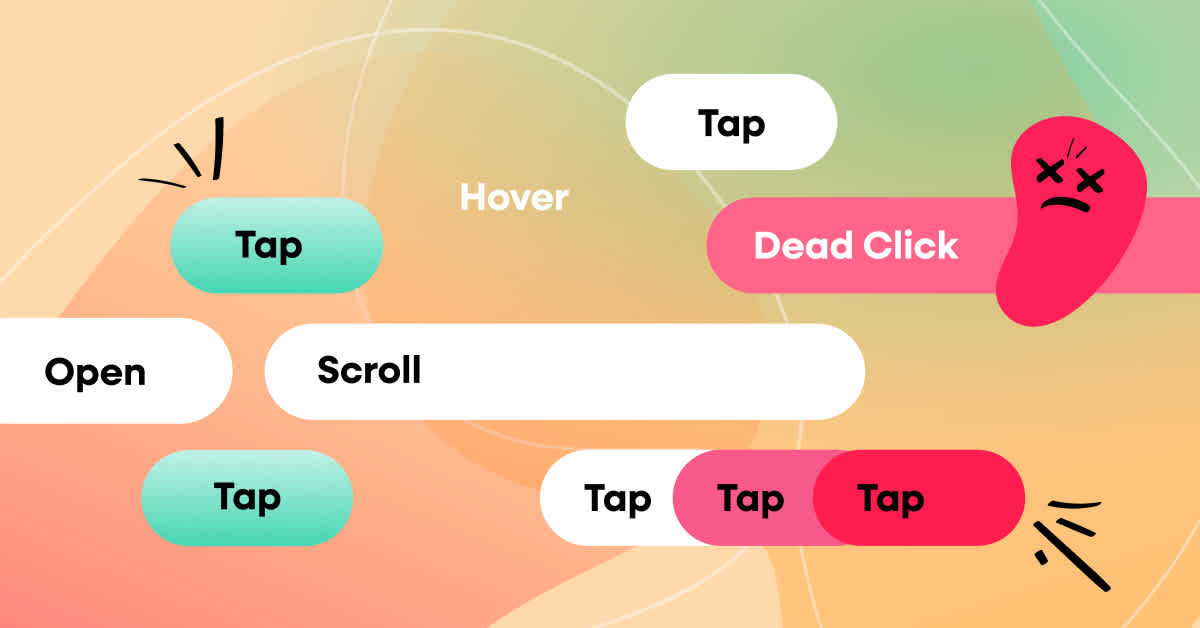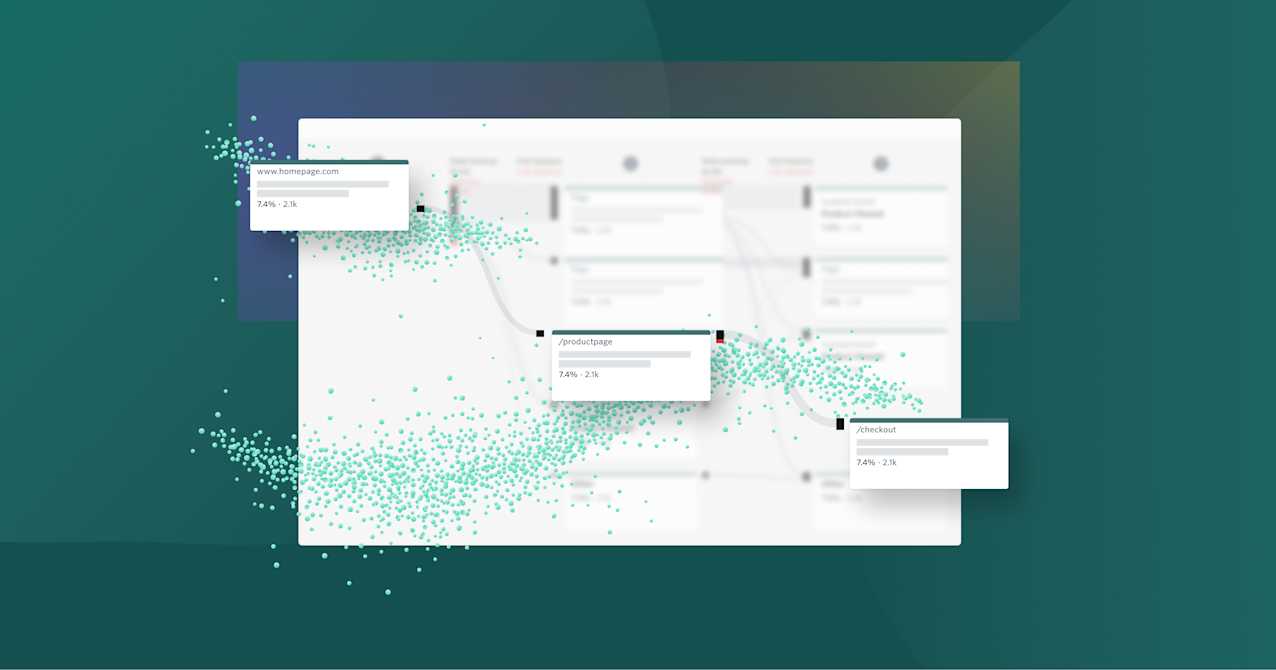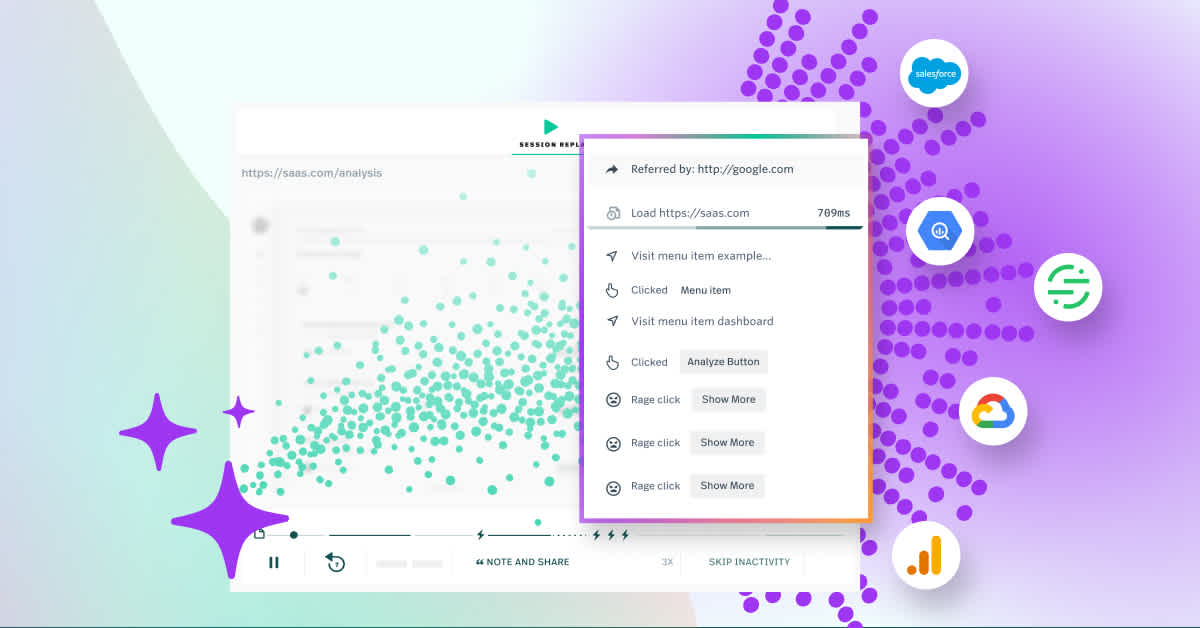Clickstream data is a roadmap of user activity that provides indispensable insights that drive better website optimization and smarter marketing.
This article demystifies clickstream data, offering you a practical approach to harnessing its power for better user experiences and business outcomes—without compromising on privacy.
Key takeaways
Clickstream data is a comprehensive log of users’ online activities and behavioral patterns that can be used to drive website and product improvements.
Collecting and analyzing clickstream data informs strategic decisions by tracking user journeys, identifying popular pages, streamlining navigation, reducing bounce rates, and enhancing targeted marketing efforts.
E-commerce can harness clickstream data to understand and optimize consumer journeys, uncover buying patterns, and improve conversion funnels, increasing engagement and sales.
What is clickstream data?
Clickstream data, in its simplest form, is a record of every action a user takes online.
This includes every click, page navigation, and interaction within a website or application, providing a real-time capture of a user’s online behavior. The beauty of clickstream data lies in its power to reveal a website's performance strengths and weaknesses by tracking key actions and decisions made by users.
It’s essential to have the right tools and strategies in place to collect clickstream data effectively, especially your product or app's first-party user data.
For instance, tracking a user’s journey from a search query to various webpages, noting the sequence, time spent, and interactions, can provide meaningful insights into user pathways and behaviors.
How clickstream data is collected
You might be wondering, how this wealth of data is accumulated?
Collecting clickstream data is achieved by capturing user clicks, page navigation, and other types of behavioral data within a website or product. Once collected, this comprehensive data is typically stored on the web server that hosts the website, making it possible to collect data for analysis.
The accumulation of diverse clickstream data types, including big data, is pivotal to fully capitalize on aggregate data analysis, which reveals user behavior and preferences.
The role of privacy in clickstream data collection
Despite the invaluable insights clickstream data provides, respecting user privacy remains paramount. The data collected should not contain personal user details. In fact, clickstream data complements data from Google Analytics and does not include personal user details, striking a balance between gaining insights and maintaining user trust.
Analyzing clickstream data
Once clickstream data has been collected and stored, the next step is analysis. Clickstream data analytics involves gathering and examining data showing a user’s website page visits and their sequence. It includes collecting, analyzing, and reporting this data. By tracking users’ journeys from their first interaction to the last, we comprehensively understand user engagement with a site.
Examination of this data empowers businesses to discern pivotal trends in customer behavior, including visitor arrival methods and on-site activities. The insights obtained from clickstream analysis are used to enhance websites or services based on the aggregate behavior of many visitors.
Key metrics in clickstream data analysis
Several key metrics hold significance in clickstream data analysis for comprehending user behavior and engagement. These include:
Visitor metrics, reporting on both unique and repeat visitors, as well as user visits
Page views
Time users spend on each page
Pathways through a website
Entry points
Frequency of visits
Clickstream data and web server log files can be examined to determine more granular user behavior and customer trends.
Moreover, additional clickstream metrics include specifics like URLs visited, referral sources, click paths, exit pages, and interaction with forms and buttons.
Tools for clickstream data analysis
Given the abundance of clickstream data, many analytical tools have been devised to decode this information. Widely utilized tools like Google Analytics, and Adobe Analytics focus on user engagement and activity.
While tools like Fullstory play significant roles in capturing and analyzing clickstream data and behavioral data.
Leveraging clickstream data for website optimization
Pages that receive significant non-homepage traffic as landing points can benefit from a more inviting and informative experience. Moreover, with the help of machine learning algorithms, complex patterns in navigation and visitor behavior can be uncovered, prompting website design changes that enhance user experience. In this context, it is important to consider how many pages should be optimized for better user engagement, taking into account the pages a user visits.
Enhancing user engagement
Clickstream data serves as a rich resource for enhancing user engagement. It allows brands to:
Identify user experience deficiencies, such as pages with early exits, indicating potential issues with optimization or content quality
Observe areas of high customer interaction through clickstream analysis
Tailor content to improve click-through rates and conversions.
Additionally, logging actions like clicks, menu selections, and product interactions aids in refining buyer personas and improving site navigation and overall customer experience.
Reducing bounce rates and exit pages
Clickstream data also proves to be a priceless asset in decreasing bounce rates and abandoned carts. By providing insights on webpages that result in significant data transmission before users navigate away, clickstream data can reveal pages with high bounce rates. Potential issues contributing to high bounce rates or frequent exits can be identified through analysis.
Utilizing clickstream data for marketing strategy
Within digital marketing, clickstream data acts as a catalyst for change. It reveals the efficacy of advertisements and campaigns, helping businesses track which campaigns drive the most traffic and implement conversion rate optimization strategies to improve customer conversion rates.
Digital marketers use clickstream data to tailor marketing messages and campaigns, leading to enriched customer experiences and more efficient utilization of marketing budgets.
Furthermore, analyzing peak times of customer engagement through clickstream data enables marketers to schedule their strategies accordingly for maximum impact.
Competitor analysis
Competitor analysis is another domain where clickstream data plays a part. Data sourced from both one’s own site and competitors’ sites can be instrumental for market research, uncovering not only the popularity of products but also vital feature trends.
By analyzing clickstream data, businesses can map out the traffic breakdown and understand user paths across various platforms, providing insights into competitors’ promotional strategies through traffic analytics.
Personalization and targeted remarketing
Clickstream data also excels in the areas of personalization and targeted remarketing. It provides insights into individual customer behavior, including search terms, page visits, and shopping cart activities, paving the way for personalized experiences on websites.
Analyzing customer data, observing frequent visitor patterns, and identifying preferred product categories can further enhance personalization.
Additionally, businesses can observe customer paths to purchase, informing targeted remarketing campaigns that aim to convert leads into customers.
Clickstream data in e-commerce
The integration of clickstream data into e-commerce has brought about a revolution in the industry. It allows brands to:
Map the consumer journey from the initial page through to the point of purchase
Provide insights into user progression and behavior
Analyze clickstream data to pinpoint the pages where cart abandonment occurs most frequently
Optimize these pages and enhance conversions
Clickstream data analysis also focuses on metrics such as page views, shopping cart changes, and purchase specifics, which are crucial for assessing transaction effectiveness.
Identifying buying patterns
Recognizing buying patterns via clickstream data analysis stands as a fundamental tactic for e-commerce brands. It reveals individual users’ browsing patterns, enabling the prediction of high-probability pages for purchases, thus informing product recommendations.
The analysis of clickstream data facilitates an understanding of the customer’s online journey from the point of initial awareness to the final conversion.
Optimizing conversion funnels
Clickstream data is also indispensable in the optimization of conversion funnels. Clickstream data analysis focuses on determining the conversion effectiveness of a website, where conversion data includes user actions like transactions, form submissions, and account creations. Streamlining the user experience within e-commerce sites based on clickstream data can lead to more effective conversion paths and better overall performance.
By analyzing clickstream data, businesses can assess the performance of marketing campaigns and identify drop-off points in the purchase process, which allows for targeted improvements.
Unlock the full potential of clickstream data
The power of clickstream data is undeniable. It offers businesses many insights into user behavior, preferences, and engagement.
Whether it's website optimization, marketing strategies, competitor analysis, or e-commerce, clickstream data is a versatile tool that empowers businesses to make data-driven decisions. The importance of understanding and leveraging user journeys online will only grow, making clickstream data an invaluable tool in the digital toolbox.






